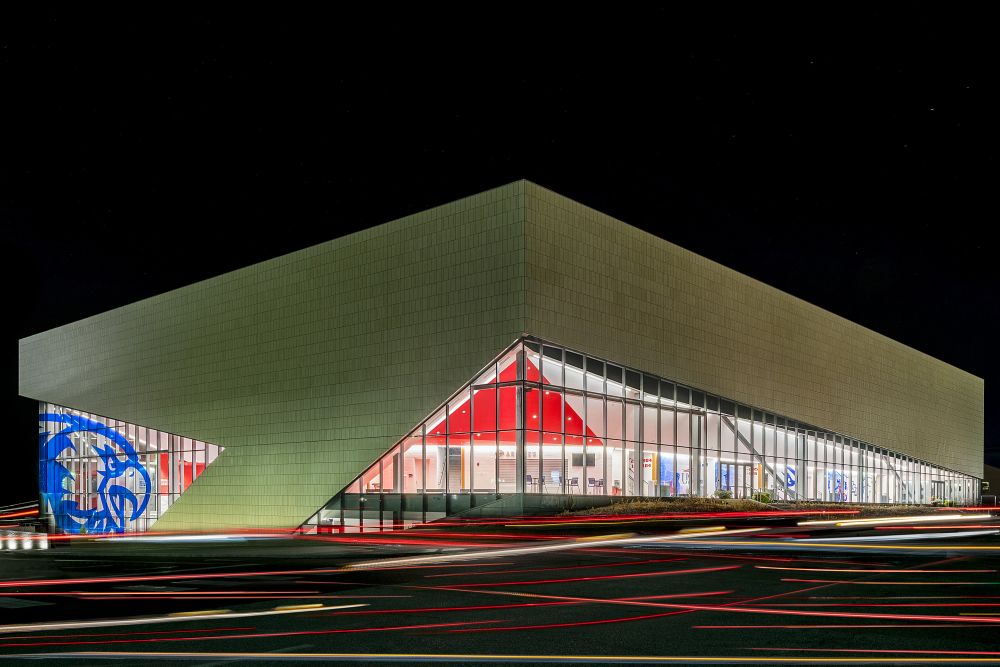A transformed collegiate sports ecosystem pushes athletic facilities into exciting new era
The world of collegiate sports has been transformed in recent years thanks to new legislation, evolving NCAA rules, athletic conference shake-ups, new investment and revenue streams, financial opportunities for student-athletes and more.
Collectively, these changes have created a new collegiate sports ecosystem that looks nothing like it did just five years ago. Here are two pivotal drivers of this collegiate sports transformation:
- Since 2021, student athletes are now able to financially benefit from their name, image and likeness (NIL).
While institutions cannot directly pay athletes, they can support the establishment of NIL collectives, independent 501(c)(3) nonprofit organizations that raise money from donors, fans, businesses, etc., then they use it to pay athletes for services like attending events, promoting brands, signing autographs or other similar activities. It is estimated that institutions in the power conferences have an average of nearly $10 million annually in their NIL collectives. - In April of this year, the NCAA adopted new rules that will allow student athletes to start playing immediately upon transfer. They no longer need to sit out a year after such a transfer, nor are they limited in how many times they can transfer schools.
This has created much more of a "free-agency" offseason for athletes and institutions during which schools dip into their NIL-collectives to make lucrative offers to transfer to another school.
These are seismic changes for the world of collegiate sports. There is no doubt they will have a significant impact on how institutions plan and design their collegiate athletic facilities moving forward.
Our Sports, Recreation and Wellness team is already identifying shifts in the conversations we are having with athletic departments where we are working.
Here are three clear ways we see collegiate athletic facilities evolving in the years ahead, including:
Athletic training facilities becoming hubs for business
The NIL legislation means more athletes will come to a university ready to build a brand. Yes, they will still care that institutions have state-of-the-art weight and cardio training areas, but they will also be looking for spaces where they can create content.
Institutions will soon look to infuse resources like recording studios, TV interview rooms and/or social media-friendly spaces for Instagram, TikTok and YouTube. In truth, this is already happening. Clemson has opened an Athletics Branding Institute and others like the University of Nebraska-Lincoln and Colorado University are creating new business and academic partnerships to help athletes advance their branding goals.
These creative solutions are just the beginning, and we anticipate more institutions will evolve their physical athletics spaces to meet the moment.
Student-athlete unions emerge
Another key shift we are seeing in collegiate athletic spaces is the emergence of focused student-athlete unions. These spaces, more akin to Olympic sports villages, create dedicated hubs for all collegiate athletes at an institution. These unions can offer dedicated athlete dining, academic support space and even some of the business-focused resources we identified above.
The University of Oregon's Hayward Field is an early example. Beneath the stadium is nearly 40,000 sf dedicated to training and recovery, including several amenities where track and field athletes can be social and come together as a team. Amenities include an indoor practice area, auditorium, lounge and shared study spaces, weight training, equipment, workspace, sports medicine, hydrotherapy, a nutrition station, barber shop and more.
We hear more clients talk about modeling this "union" approach at their institutions to better empower their athletes.
Deeper focus on student-athlete mental health
The importance of mental health has moved into the spotlight across America and is beginning to gain more awareness in the world of athletics. In fact, data suggest that 35% of elite athletes suffer from mental health disorders but only 10% seek help. Moreover, 61% of female athletes and 40% of male athletes indicate that mental health plays a role in their considering of the transfer portal.
The NCAA and institutions are much more aware of the direct correlation between mental health and performance and the toll it takes on student athletes. We see numerous ways the built environment can support them. Beyond designing athletic facilities with dedicated spaces for counseling, sports psychologists and more, designers can also help infuse every component of athletic training facilities with proven mental health design strategies that also focus on recovery.
From increasing access to natural light, nature and more, there are dynamic ways we can transform athletics facilities to help curb mental health challenges. At CannonDesign, we are lucky to have a dedicated mental and behavioral health design team we can tap into for any sports project.
Recent changes like NIL and the transfer portal have forever reshaped collegiate athletics. However, we are just at the beginning of how athletic facilities and collegiate campuses will physically evolve to support these shifts. There are exciting trends emerging and opportunities to be seized, and we are excited to work with institutions to make their vision a reality.










